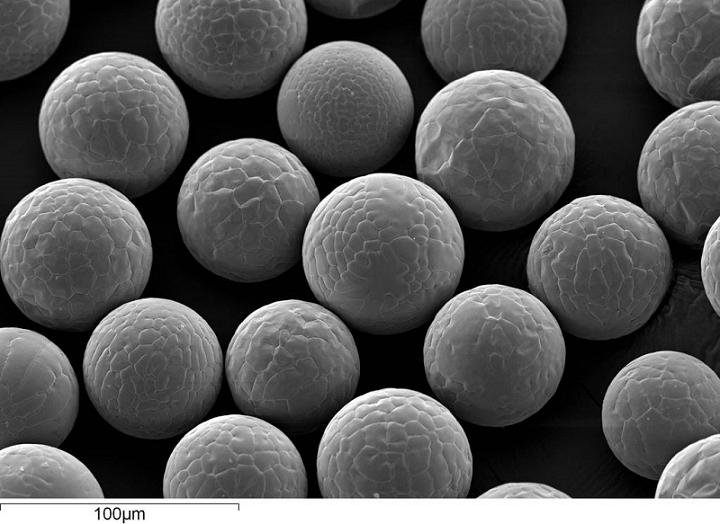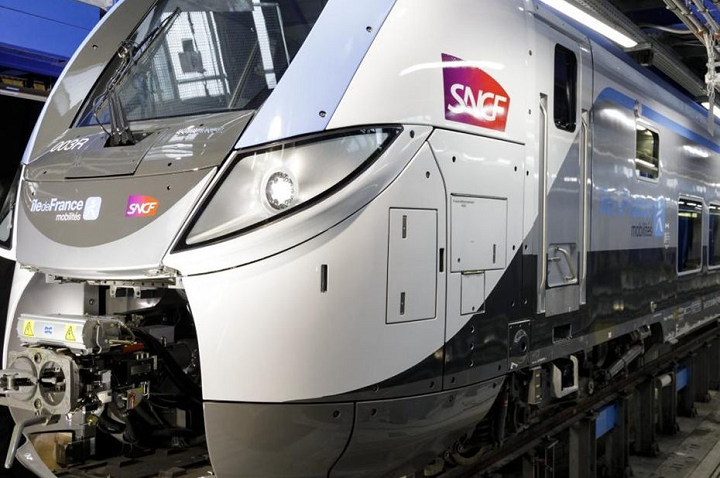We’re starting with business in 3D Printing News Briefs today, as Aconity3D will be distributing metal AM powders by Equispheres and Photocentric has partnered up with umati. Moving on, the French National Railway Company is working to optimize train maintenance with 3D printing. On to medical, as Washington State University’s Veterinary Teaching Hospital is investigating the use of 3D printed guides to help during brain surgery. Finally, fizik has launched a new 3D printed bike saddle.
Aconity3D to Distribute Equispheres’ Metal AM Powders
Metal AM equipment manufacturer Aconity3D has agreed to distribute high-performance aluminum AM powders from Equispheres. The two have reported high production 3D printing speeds by printing Equispheres’ specialized powders—designed specifically for AM—on the AconityTWO system. Together, they printed the AconitySCAN, which is a main component of Aconity3D printers, three times faster, with no impact on mechanical properties, using the powder, which led to a decrease in production costs by more than 50%. This will be especially helpful in industries such as automotive.
“Our material has proven to work well with Aconity3D equipment. This non-exclusive agreement allows Aconity3D to provide its customers with a powder qualified on Aconity3D printing equipment, that has been shown to achieve higher build rates than traditional aluminum powders when combined with the precision and power of Aconity3D’s equipment,” said Evan Butler-Jones, Vice-President – Product & Strategy, for Equispheres.
“Equispheres’ powder can absorb the energy from a powerful one-kilowatt laser without disturbing the stability of the melt pool. This is not attainable with standard aluminum powders, and it becomes more important as the industry embraces newer higher-tech printing equipment.”
Photocentric and umati Partner to Improve Connectivity
LCD 3D printing leader Photocentric announced that it’s partnering with umati (universal machine technology interface) in order to improve manufacturing connectivity and workflows for its customers. umati is a community of machine building industries and their customers to promote and adopt open, standardized interfaces based on OPC Unified Architecture. Through this partnership, Photocentric’s plug and play system can be integrated with MES, and other facility management systems, using standard OPC UA-based interfaces. This will make it easier to build a strong manufacturing infrastructure, improve connectivity, and help speed the worldwide shift to Industry 4.0.
“Thanks to the open-source nature of umati along with a rapidly growing community of industry experts, we believe this standardised interface will soon become the go-to for machinery connectivity across all sectors of mechanical engineering. We are excited to see Umati’s notion of a common language support the sharing of machine data between companies to encourage continuous learning and process optimisation,” said Doug Finlay, Lead Software Developer at Photocentric.
“Our partnership with umati will help mitigate the complexities involved when collaborating with other companies in the manufacturing sector, resulting in the faster development of innovative production processes, and benefitting our customers.”
SNCF Optimizing Train Maintenance with 3D Printing
Moving on, the SNCF (Société Nationale des Chemins de Fer Français or French National Railway) has launched the Additive4Rail project to speed up industrialization of AM to optimize train maintenance and lower costs. According to a translated article, the project is supported by fellow consortium members the École Centrale de Nantes, robotic agile cell manufacturing VLM Robotics, and the startup 4D Pioneers, which specializes in producing industrial parts.
The objective is to reduce lead times for prototyping, tooling, and procurement, as well as reduce spare parts inventories and improve the components. A 150 square meter production line will be installed in Saintes in Charente-Maritime, on one of the sites of the Technicentre Industriel SNCF Charente-Périgord, for manufacturing and repairing metal and polymer parts. The project will specifically focus on FDM and WAAM 3D printing technologies for manufacturing and certifying mechanical parts for trains, and railway demonstrators will also be printed. The consortium received a total investment of €10.7 million in public funding, doled out to the partners over the next four years.
WSU’s Veterinary Teaching Hospital 3D Printing Surgical Guides

Dr. Tom Wilkinson holds a surgical guide he created using CT imaging data and a 3D printer at the WSU Veterinary Teaching Hospital. The guide is being developed to hopefully assist in pituitary surgeries for dogs suffering from Cushing’s disease.
Dr. Thomas Wilkinson, an Associate Professor with the Diagnostic Imaging service at Washington State University’s Veterinary Teaching Hospital, is working with surgeons at the university to see if 3D printing can help simplify the tricky brain surgery for removing non-cancerous pituitary tumors that cause Cushing’s disease. The condition triggers the release of excessive levels of cortisol from the adrenal glands, and if the tumor is untreated, it can grow so big that it presses on the brain and causes issues like difficulty walking and seizures; unfortunately, the two-day procedure is very complicated and 8-20% of canine patients don’t survive it. Dr. Wilkinson had 3D printed models for neurological and orthopedic procedures before, but thought it might be helpful to use the technology, and a CT scan of the patient’s skull, to create a drill guide that could potentially shorten the lengthy procedure, lower stress, and maybe even reduce costs. He suggested the idea to Dr. Tina Owen, a small animal surgeon at WSU and one of the only veterinarians in the U.S. that can perform this specific surgery. Now, they are working together to test out 3D printed drill guides.
Dr. Owen said, “Ideally this 3D model will slip right in and kind of hook on landmarks in the skull and there will be a hole right in the middle that will match where we want to drill.”
fizik Introduces New Argo Adaptive 3D Printed Saddle
Finally, cycling brand fizik has introduced a new 3D printed bike saddle, called the Argo Adaptive. This lightweight, short-nose saddle features the same 3D printed digital padding its Antares and original Argo models had. 3D printing makes it possible for the Italian brand to tune the padding across the saddle so it matches a specific rider. Additionally, fizik says the shape of the Argo Adaptive has been optimized for different sit bone positions and postures, and like other short-nose models, it allows cyclists to rotate their hips forward to achieve a more aerodynamic position without putting too much pressure on the soft tissue between the legs.
“As a cyclist’s most sensitive point of contact, a properly fitting bike seat can mean the difference between a good or bad ride, going the distance or stopping short—in short, winning or losing,” the fizik website states. “Our full range of men’s and women’s cycling saddles are engineered to perform with discipline-specific designs as well as a choice of widths and profiles suited to match the varying body types and riding positions of individual cyclists.”
The Argo Adaptive will be available in 140 mm and 150 mm widths, and two different models. The carbon-rail Argo Adaptive R1, weighing between 190-196 grams, will be $299, while the alloy-rail Argo Adaptive R3 will be $259 and weigh between 224 and 230 grams.
Subscribe to Our Email Newsletter
Stay up-to-date on all the latest news from the 3D printing industry and receive information and offers from third party vendors.
You May Also Like
Gorilla Sports GE’s First 3D Printed Titanium Cast
How do you help a gorilla with a broken arm? Sounds like the start of a bad joke a zookeeper might tell, but it’s an actual dilemma recently faced by...
Nylon 3D Printed Parts Made More Functional with Coatings & Colors
Parts 3D printed from polyamide (PA, Nylon) 12 using powder bed fusion (PBF) are a mainstay in the additive manufacturing (AM) industry. While post-finishing processes have improved the porosity of...
$25M to Back Sintavia’s Largest Expansion of Metal 3D Printing Capacity Since 2019
Sintavia, the digital manufacturing company specializing in mission-critical parts for strategic sectors, announced a $25 million investment to increase its production capacity, the largest expansion to its operations since 2019....
Velo3D Initiates Public Offering in a Bid to Strengthen Financial Foundations and Drive Future Growth
Velo3D (NYSE: VLD) has been among a number of publicly traded 3D printing firms that have attempted to weather the current macroeconomic climate. After posting a challenging financial report for 2023,...



































